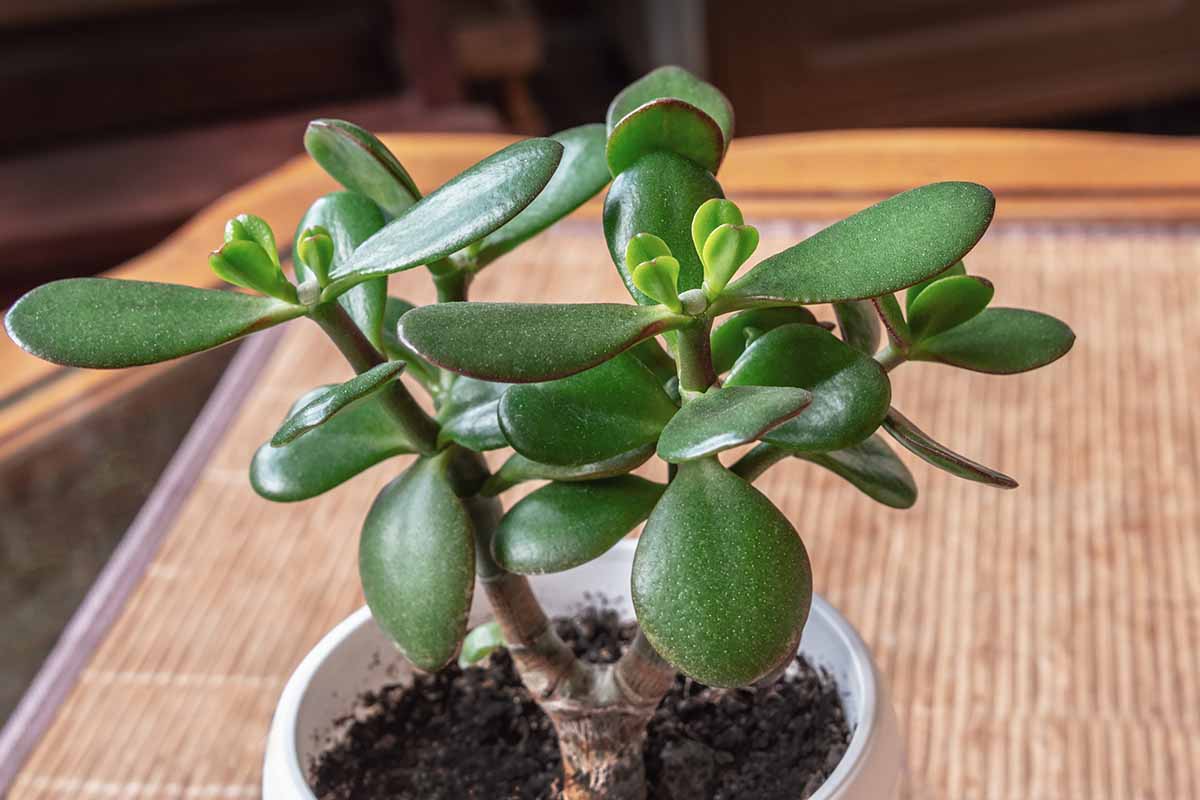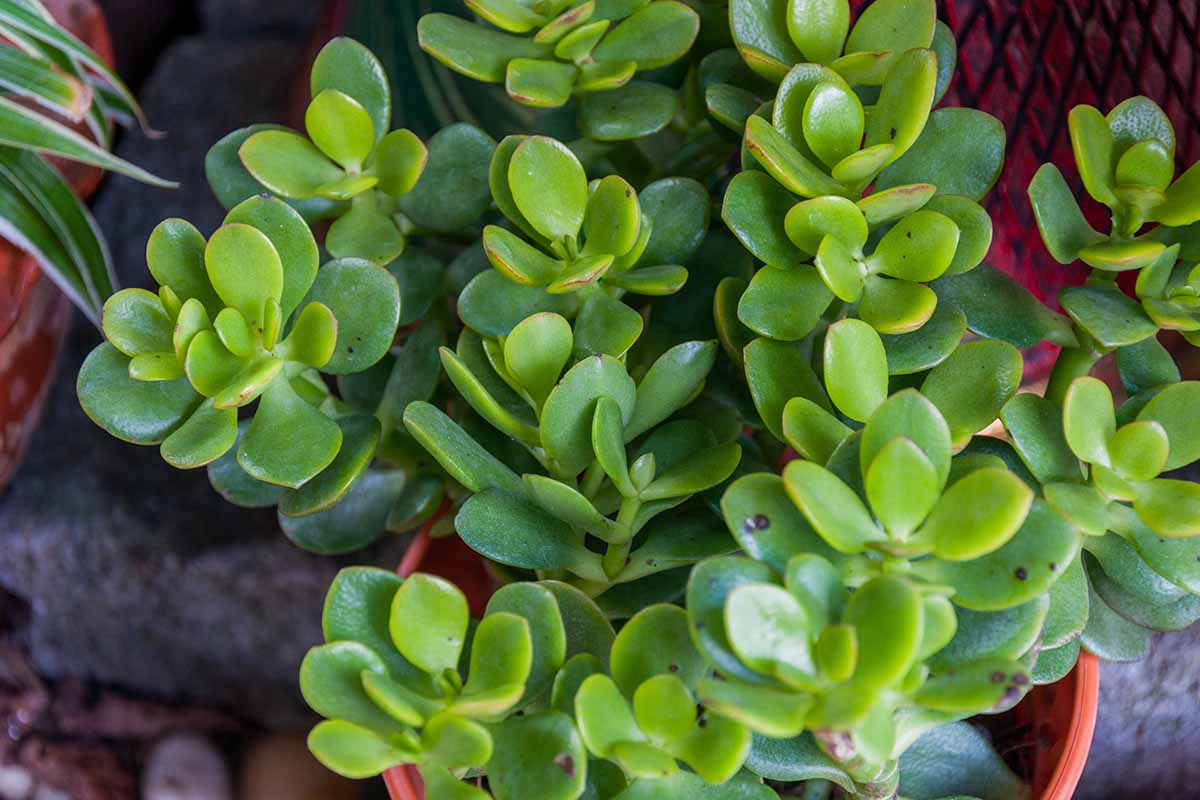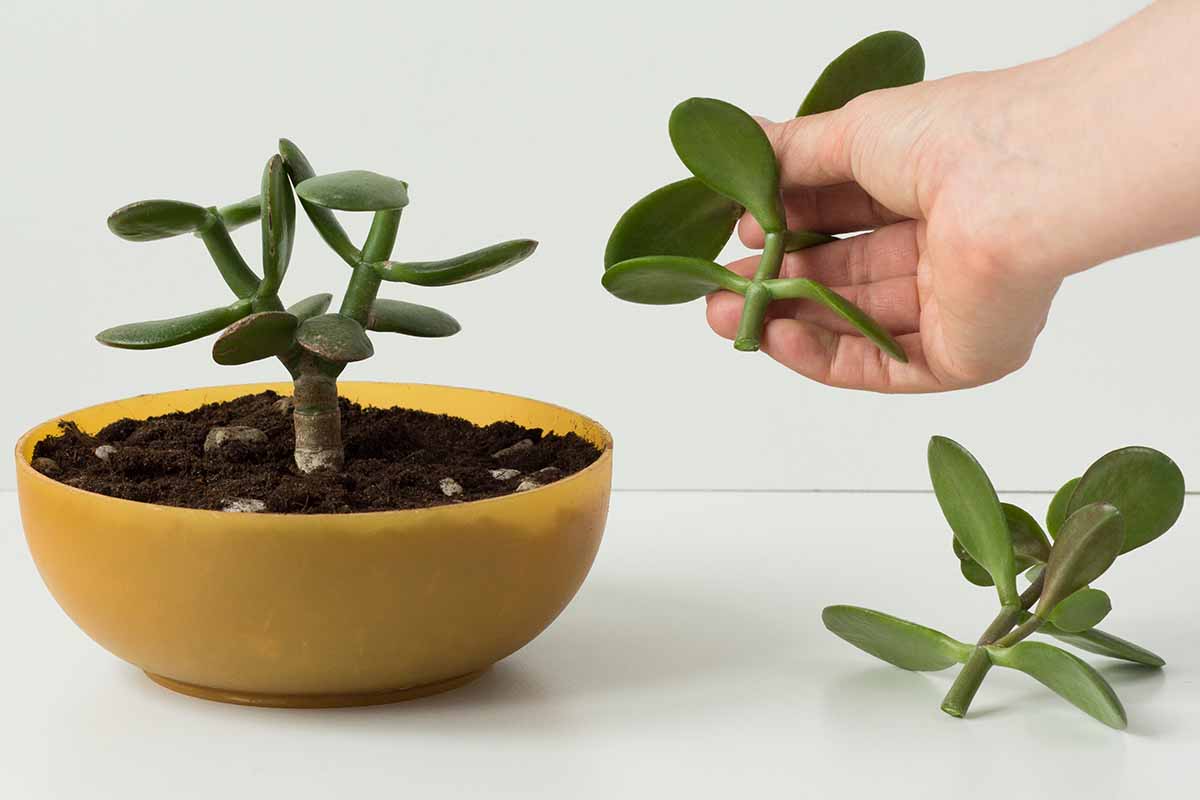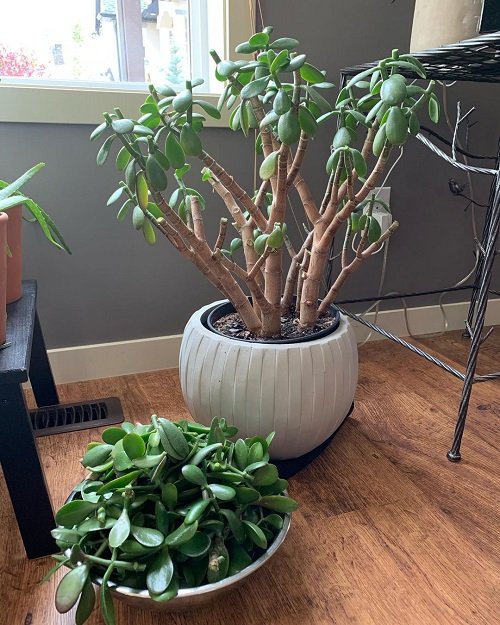Why Prune Your Jade Plant
Pruning is an essential part of jade plant care, and it offers numerous benefits for the health and appearance of the plant. By cutting back a jade plant, you can maintain its shape, promote healthy growth, and encourage new leaves to emerge. Pruning also helps prevent the plant from becoming leggy, which can make it look unkempt and unattractive. Additionally, pruning can improve the overall appearance of the plant by removing dead or damaged leaves and stems, creating a more balanced and visually appealing shape.
One of the primary reasons to prune a jade plant is to control its size and shape. Jade plants can grow quite large if left unpruned, and they may become top-heavy, which can cause them to topple over. By pruning the plant regularly, you can keep it at a manageable size and encourage it to grow in a more compact, bushy shape. This is especially important if you’re growing the plant in a small space, such as a windowsill or a desk.
Pruning can also help promote healthy growth in jade plants. By removing dead or damaged leaves and stems, you can prevent the spread of disease and encourage the plant to focus its energy on producing new growth. This can lead to a more robust and vibrant plant, with a fuller, more lush appearance. Furthermore, pruning can help encourage the plant to produce new leaves and stems, which can add to its overall size and shape.
Another benefit of pruning a jade plant is that it can help encourage new growth. By cutting back the plant, you can stimulate it to produce new leaves and stems, which can add to its overall size and shape. This can be especially beneficial if you’re looking to propagate new plants from the pruned stems. By providing the plant with the right conditions and care, you can encourage it to produce new growth, which can be used to create new plants.
When to Prune Your Jade Plant
The timing of pruning is crucial for the health and well-being of your jade plant. Pruning at the right time can help the plant recover quickly and minimize stress. The ideal time to prune a jade plant is during the active growing season, which typically occurs in the spring and summer months. During this time, the plant is producing new growth, and pruning can help control its size and shape.
When pruning a jade plant, it’s essential to consider the temperature and humidity conditions. Jade plants prefer temperatures between 65-75°F (18-24°C) and humidity levels above 50%. Pruning during periods of extreme temperatures or low humidity can cause stress to the plant, leading to disease or pest issues.
In terms of specific timing, it’s best to prune your jade plant in the morning, when the plant is at its highest water content. This helps minimize stress and prevents the plant from becoming dehydrated. Additionally, pruning in the morning allows the plant to recover quickly, as it has the entire day to absorb water and nutrients.
It’s also important to avoid pruning your jade plant during periods of dormancy, typically during the fall and winter months. During this time, the plant is conserving energy, and pruning can cause unnecessary stress. Instead, focus on providing the plant with the right care and conditions, such as reduced watering and fertilization, to help it thrive during the dormant period.
By pruning your jade plant at the right time, you can help promote healthy growth, control its size and shape, and encourage new leaves to emerge. Remember to consider the temperature and humidity conditions, as well as the plant’s natural growth cycle, to ensure the best results.
How to Prune Your Jade Plant
Pruning a jade plant requires some care and attention to detail, but with the right tools and techniques, you can help your plant thrive. To start, you’ll need a few basic tools, including a pair of clean, sharp pruning shears or scissors, and a small pot or container to collect the pruned stems.
Before you begin pruning, inspect your jade plant carefully to identify the stems that need to be cut back. Look for leggy stems, dead or damaged leaves, and overgrown branches. These are the areas that will benefit most from pruning.
To make a clean cut, locate the node on the stem, which is the point where a leaf meets the stem. Cut just above the node, using a 45-degree angle cut. This will help the plant heal quickly and reduce the risk of disease or pest issues.
When cutting back stems, make sure to cut at a 45-degree angle, and avoid cutting too close to the node. Cutting too close to the node can cause the plant to become stressed, leading to disease or pest issues.
As you prune your jade plant, be sure to remove any dead or damaged leaves or stems. This will help prevent the spread of disease and encourage healthy growth. You can also use this opportunity to shape the plant, cutting back tall stems or overgrown branches to maintain a balanced shape.
After pruning, inspect your jade plant carefully to ensure that you have removed all dead or damaged areas. If necessary, repeat the pruning process to ensure that your plant is healthy and thriving.
By following these steps and using the right techniques, you can help your jade plant thrive and maintain its optimal shape and size. Remember to prune your jade plant regularly to encourage healthy growth and prevent it from becoming leggy or overgrown.
https://www.youtube.com/watch?v=0z039xkStHU
What to Cut Back and What to Leave
When pruning a jade plant, it’s essential to know what parts of the plant to cut back and what to leave intact. Cutting back the right stems and leaves can help maintain the plant’s shape, promote healthy growth, and encourage new leaves to emerge.
Leggy stems are one of the most common areas to cut back on a jade plant. These stems can make the plant look unbalanced and can also cause it to become top-heavy. To cut back leggy stems, locate the node on the stem, which is the point where a leaf meets the stem. Cut just above the node, using a 45-degree angle cut. This will help the plant heal quickly and reduce the risk of disease or pest issues.
Dead or damaged leaves are another area to cut back on a jade plant. These leaves can be unsightly and can also spread disease to other parts of the plant. To remove dead or damaged leaves, simply cut them off at the base of the leaf, making sure to make a clean cut just above the node.
Overgrown branches are also a common area to cut back on a jade plant. These branches can make the plant look unbalanced and can also cause it to become top-heavy. To cut back overgrown branches, locate the node on the branch, which is the point where a leaf meets the branch. Cut just above the node, using a 45-degree angle cut.
On the other hand, there are some parts of the jade plant that should be left intact. New growth, for example, should not be cut back, as this can cause the plant to become stressed and affect its growth. Healthy leaves should also be left intact, as these provide the plant with the nutrients it needs to grow and thrive.
By cutting back the right stems and leaves, and leaving intact the parts of the plant that are healthy and thriving, you can help maintain the shape and size of your jade plant, promote healthy growth, and encourage new leaves to emerge.
Tips for Pruning Jade Plant Stems
Pruning jade plant stems requires some care and attention to detail, but with the right techniques, you can help your plant thrive. Here are some tips for pruning jade plant stems:
One of the most important things to keep in mind when pruning jade plant stems is to cut at a 45-degree angle. This helps the plant heal quickly and reduces the risk of disease or pest issues. To cut at a 45-degree angle, locate the node on the stem, which is the point where a leaf meets the stem. Cut just above the node, using a sharp, clean pruning tool.
Another tip for pruning jade plant stems is to cut back tall stems. Tall stems can make the plant look unbalanced and can also cause it to become top-heavy. To cut back tall stems, locate the node on the stem and cut just above it, using a 45-degree angle cut. This will help the plant grow more compactly and prevent it from becoming leggy.
Shaping the plant is also an important part of pruning jade plant stems. To shape the plant, cut back stems that are growing outside of the desired shape. This will help the plant grow more compactly and prevent it from becoming leggy. You can also use pruning to encourage branching, which can help the plant grow more densely and produce more leaves.
Encouraging branching is another important part of pruning jade plant stems. To encourage branching, cut back stems that are growing straight up. This will help the plant grow more densely and produce more leaves. You can also use pruning to encourage the plant to grow more compactly, which can help prevent it from becoming leggy.
Finally, it’s essential to prune jade plant stems regularly to maintain the plant’s shape and size. Regular pruning can help prevent the plant from becoming leggy and can also encourage new growth. By pruning your jade plant stems regularly, you can help your plant thrive and maintain its optimal shape and size.
Common Mistakes to Avoid When Pruning Jade Plants
Pruning a jade plant can be a delicate process, and making mistakes can harm the plant and affect its growth. Here are some common mistakes to avoid when pruning jade plants:
Over-pruning is one of the most common mistakes to avoid when pruning jade plants. Over-pruning can cause the plant to become stressed, leading to disease or pest issues. To avoid over-pruning, only remove the necessary stems and leaves, and make sure to leave enough foliage to allow the plant to photosynthesize.
Under-pruning is another mistake to avoid when pruning jade plants. Under-pruning can cause the plant to become leggy and unbalanced, leading to a decrease in its overall appearance. To avoid under-pruning, make sure to remove any dead or damaged leaves and stems, and cut back any overgrown branches.
Making cuts too close to the node is another mistake to avoid when pruning jade plants. Cutting too close to the node can cause the plant to become stressed, leading to disease or pest issues. To avoid making cuts too close to the node, make sure to cut just above the node, using a 45-degree angle cut.
Not disinfecting pruning tools is another mistake to avoid when pruning jade plants. Not disinfecting pruning tools can cause the spread of disease and pests, leading to harm to the plant. To avoid this, make sure to disinfect your pruning tools with a solution of 1 part bleach to 9 parts water before and after pruning.
Pruning during the wrong season is another mistake to avoid when pruning jade plants. Pruning during the wrong season can cause the plant to become stressed, leading to disease or pest issues. To avoid this, make sure to prune your jade plant during the active growing season, when the plant is producing new growth.
By avoiding these common mistakes, you can help ensure that your jade plant remains healthy and thrives. Remember to always prune your jade plant with care and attention to detail, and to make clean cuts just above the node.
Aftercare for Pruned Jade Plants
After pruning your jade plant, it’s essential to provide the right care to help it recover and thrive. Here are some tips for aftercare:
Watering is crucial after pruning, as it helps the plant to recover from the shock of pruning. Make sure to water your jade plant thoroughly, but avoid overwatering, which can lead to root rot and other problems.
Fertilization is also important after pruning, as it provides the plant with the necessary nutrients to promote healthy growth. Use a balanced fertilizer that is specifically designed for cacti and succulents, and follow the instructions on the label for application rates.
Humidity is another important factor to consider after pruning. Jade plants prefer a relatively high humidity, typically above 50%. You can increase the humidity around your plant by placing it on a tray filled with water and pebbles or using a humidifier.
Monitoring your plant for signs of stress or disease is also crucial after pruning. Check your plant regularly for any signs of pests, diseases, or nutrient deficiencies, and take action promptly if you notice any problems.
Providing sufficient light is also important after pruning. Jade plants prefer bright, indirect light, but direct sunlight can be too intense and may cause the leaves to become scorched. East- or west-facing windows are ideal for jade plants.
Temperature is also an important factor to consider after pruning. Jade plants prefer daytime temperatures between 65-75°F (18-24°C) and nighttime temperatures around 55-65°F (13-18°C). Avoid placing your plant near heating or cooling vents, fireplaces, or drafty windows.
By following these aftercare tips, you can help your jade plant recover from pruning and promote healthy growth. Remember to be patient, as it may take some time for your plant to adjust to the pruning.
Encouraging New Growth After Pruning
After pruning your jade plant, it’s essential to encourage new growth to help the plant recover and thrive. Here are some tips to encourage new growth on your jade plant:
Providing sufficient light is crucial for encouraging new growth on a jade plant. Jade plants prefer bright, indirect light, but direct sunlight can be too intense and may cause the leaves to become scorched. East- or west-facing windows are ideal for jade plants.
Temperature is also an important factor to consider when encouraging new growth on a jade plant. Jade plants prefer daytime temperatures between 65-75°F (18-24°C) and nighttime temperatures around 55-65°F (13-18°C). Avoid placing your plant near heating or cooling vents, fireplaces, or drafty windows.
Watering is also essential for encouraging new growth on a jade plant. Make sure to water your plant thoroughly, but avoid overwatering, which can lead to root rot and other problems.
Fertilization is also important for encouraging new growth on a jade plant. Use a balanced fertilizer that is specifically designed for cacti and succulents, and follow the instructions on the label for application rates.
Humidity is another important factor to consider when encouraging new growth on a jade plant. Jade plants prefer a relatively high humidity, typically above 50%. You can increase the humidity around your plant by placing it on a tray filled with water and pebbles or using a humidifier.
Propagating new plants from pruned stems is also a great way to encourage new growth on a jade plant. Simply cut the pruned stems into sections, allow them to dry for a few days, and plant them in well-draining soil. Keep the soil moist and provide sufficient light and temperature, and you should see new growth within a few weeks.
By following these tips, you can encourage new growth on your jade plant and help it recover from pruning. Remember to be patient, as it may take some time for your plant to adjust to the pruning.








